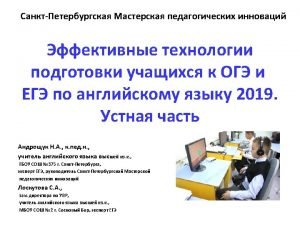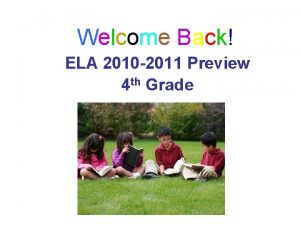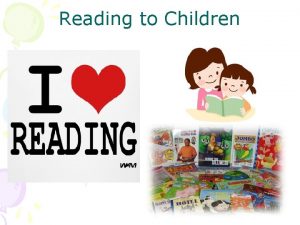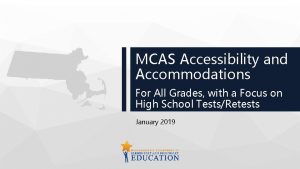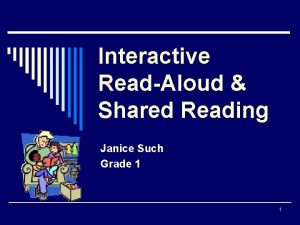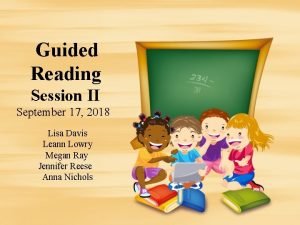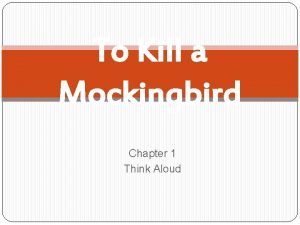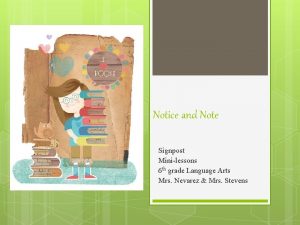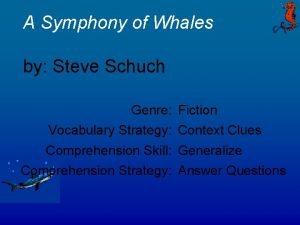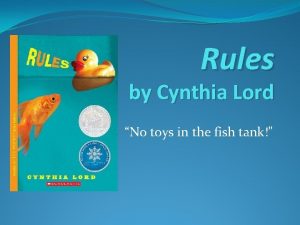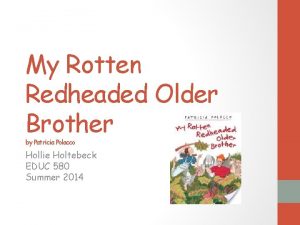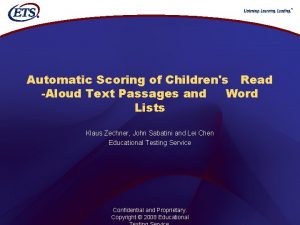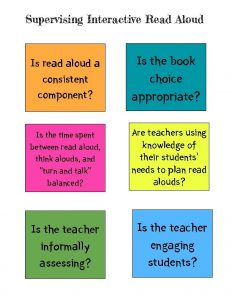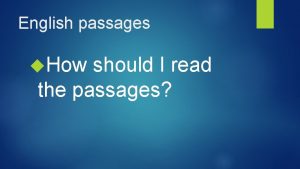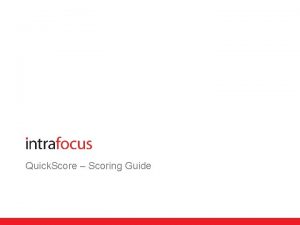Automatic Scoring of Childrens Read Aloud Text Passages
















- Slides: 16

® Automatic Scoring of Children's Read -Aloud Text Passages and Word Lists Klaus Zechner, John Sabatini and Lei Chen Educational Testing Service Confidential and Proprietary. Copyright © 2008 Educational

® Motivation (1) • Reading evaluations of middle school population gaining importance • Traditional evaluation of reading: off-line, post-hoc answering of questions on passage • Oral reading assessment: on-line, can capture additional dimensions such as fluency, pronunciation etc. • High correlation between oral reading performance measures and traditional reading proficiency measures 2 Confidential and Proprietary. Copyright © 2008 Educational Testing Service.

® Motivation (2) • Goal: read-aloud assessment with fully automatic means • Using automatic speech recognition (ASR) • Corpus of text passages and word lists • Correlations between automatic and manual performance measure CWPM (“correct words per minute”) 3 Confidential and Proprietary. Copyright © 2008 Educational Testing Service.

® CWPM • Main read-aloud proficiency measure in this paper: “correctly read words per minute” 4 Confidential and Proprietary. Copyright © 2008 Educational Testing Service.

® Related work • Project LISTEN (Mostow et al. , 1994 ff. ): a reading tutor for children that listens • Project TBALL (Alwan, 2007): assessment of children’s language skills 5 Confidential and Proprietary. Copyright © 2008 Educational Testing Service.

® Challenges in Recognizing Children's Speech • Variations in acoustics – Sentence duration decreases almost linearly between age 7 and 14 – Higher fundamental frequency for children • Variations in syntax – Children tend to ignore sentence boundaries or pause at positions in the text where no pause is warranted Consequently: - Training of specific acoustic and language models 6 Confidential and Proprietary. Copyright © 2008 Educational Testing Service.

® Data sets • Passages: – Training: 600+ passages (3 different texts) – Evaluation: 101 passages • Word lists: – Training: 500+ word lists – Evaluation: 42 word lists 7 Confidential and Proprietary. Copyright © 2008 Educational Testing Service.

® Annotation of reading errors • Annotators listen to read-aloud recordings • Enter reading errors into spreadsheet (1 word per line) • Main annotation types: deletions and substitutions of words • Further: insertions of words (not relevant in CWPM formula) 8 Confidential and Proprietary. Copyright © 2008 Educational Testing Service.

® ASR training and word accuracy 1. Acoustic Model (AM): - combined ETS data with OGI and CMU Kids data 2. Language Model (LM): - Passages: interpolated LM, strongly biased to transcribed passages - Word lists: uniform LM due to difficulty of automatically locating words in signal (noises) Word Accuracy (on unseen test data): - Passages: 72%; Word lists: 50% 9 Confidential and Proprietary. Copyright © 2008 Educational Testing Service.

® Computing CWPM • We don’t know “true” number of deletions and substitutions so we estimate them comparing the recognizer’s output with the true reference passage (using NIST’s sclite package) • Pearson Correlations: r=0. 86 (passages), r=0. 80 (word lists; we do not use the reading time here, i. e. “cw” instead of “cwpm”) • Spearman Rank Correlations: r>=0. 7 10 Confidential and Proprietary. Copyright © 2008 Educational Testing Service.

® Cohort prediction experiment • Selected all 27 speakers from passage evaluation set who read all 3 passages • Placed them into 3 equal-sized cohorts based on manually determined CWPM measure • Predicted rank of all speakers by ASR and automatic CWPM computation • Result: All 27 speakers placed in correct cohort (within-cohort rankings differ from human rankings) 11 Confidential and Proprietary. Copyright © 2008 Educational Testing Service.

® Children’s typical reading errors • Passages (substitutions): • mostly morphological variants, e. g. , asks ==> ask • wrong determiners or prepositions • Word lists (substitutions): – many part-of-speech errors (e. g. , nature ==> natural, equality ==> equally) 12 Confidential and Proprietary. Copyright © 2008 Educational Testing Service.

® Typical speech recognition errors • Passages (substitutions): • Also some morphological variants, but more closed class word errors (e. g. , determiners, conjunctions, prepositions) • Word lists (substitutions): • Mix of morphological variants, POS-cognates, and sound -related (e. g. , simple ==> example) 13 Confidential and Proprietary. Copyright © 2008 Educational Testing Service.

® Matched errors (S+D) Recall of students’ errors by ASR system Passages 47. 7% Word lists 16. 8% 14 Confidential and Proprietary. Copyright © 2008 Educational Testing Service.

® Summary • Showed feasibility of automatically scoring children’s read-aloud speech; word lists harder than passages • High correlation of predicted CWPM with human CWPM (Pearson r>=0. 8. Spearman r>=0. 7) • Very successful cohort assignment experiment • Major ASR problems with word lists due to audio quality issues 15 Confidential and Proprietary. Copyright © 2008 Educational Testing Service.

® Future work • Improve accuracy of ASR system (e. g. , more data for AM and LM training) • Add new passages and word lists to corpus • Better recording conditions needed, particularly for word lists (e. g. , pre-recording sound calibration, on-line monitoring, storing of time stamps when words are presented on screen) • Investigate using fluency-related and other features from ASR output for improved CWPM prediction 16 Confidential and Proprietary. Copyright © 2008 Educational Testing Service.
 Task 1 read the text aloud
Task 1 read the text aloud Task 1. read the text
Task 1. read the text Shared reading vs read aloud
Shared reading vs read aloud Read aloud stellaluna
Read aloud stellaluna Shared reading vs read aloud
Shared reading vs read aloud Mcas accommodations codes
Mcas accommodations codes Shared reading vs read aloud
Shared reading vs read aloud Shared reading vs read aloud
Shared reading vs read aloud Jane yolen encounter
Jane yolen encounter Charlotte's web chapter 13 read aloud
Charlotte's web chapter 13 read aloud Balanced literacy definition
Balanced literacy definition Who has cooties in to kill a mockingbird
Who has cooties in to kill a mockingbird Again and again signpost example
Again and again signpost example Amelia and eleanor go for a ride read aloud
Amelia and eleanor go for a ride read aloud Symphony of whales read aloud
Symphony of whales read aloud Rules by cynthia lord read aloud
Rules by cynthia lord read aloud My rotten redheaded older brother
My rotten redheaded older brother

